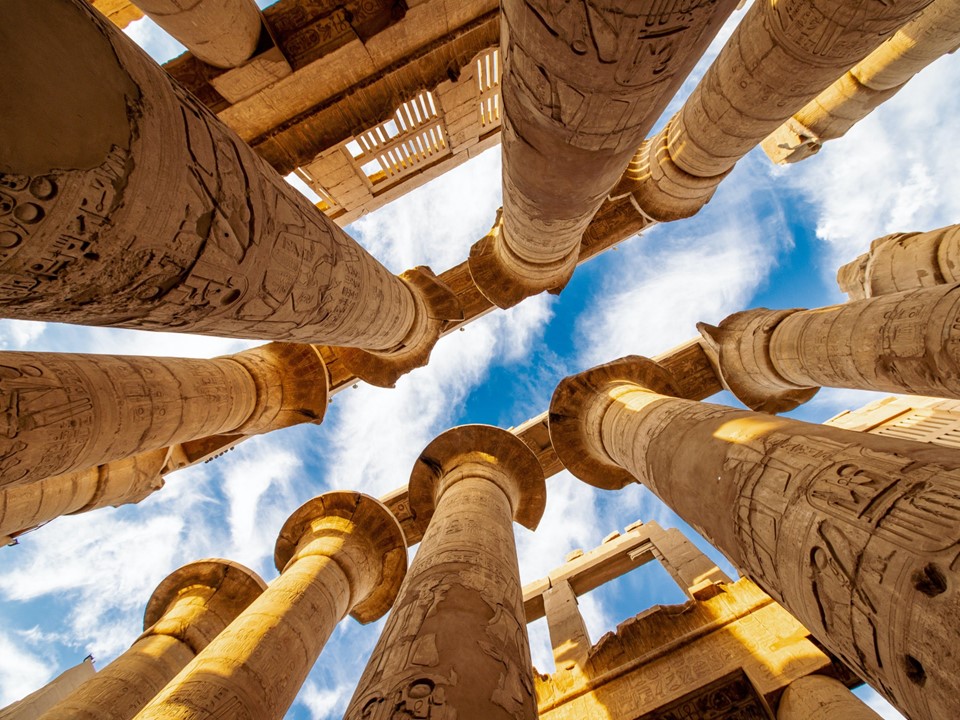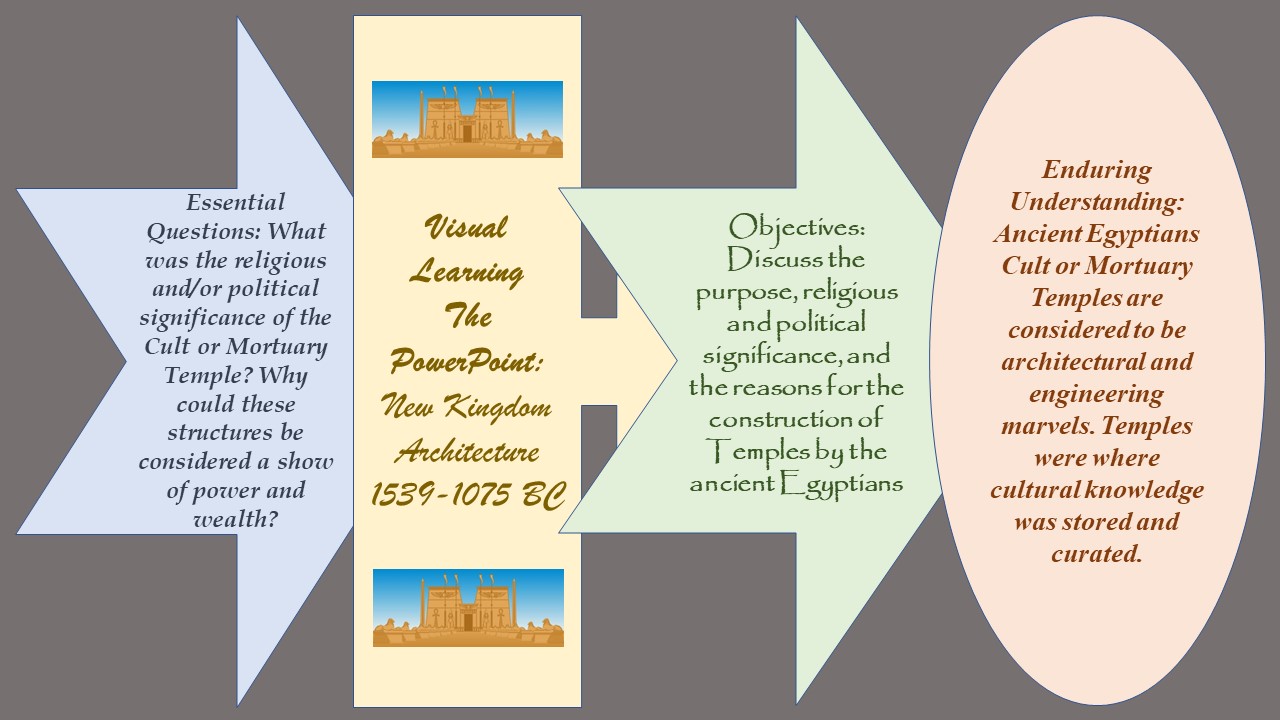
https://www.worldhistory.org/image/12797/great-hypostyle-hall-columns-karnak/
Late in the Second Intermediate Period (ca. 1650–1550 B.C.), the Theban rulers (Dynasty 17) began to drive the Hyksos kings (Dynasty 15) from the Delta. This was finally accomplished by Ahmose I, who reunited Egypt, ushering in the New Kingdom—the third great era of Egyptian culture. Ahmose’s successors in Dynasty 18 conducted military campaigns that extended Egypt’s influence in the Near East and established Egyptian control of Nubia to the fourth cataract. As a result, the New Kingdom pharaohs commanded unimaginable wealth, much of which they lavished on their gods, especially Amun-Re of Thebes, whose cult temple at Karnak was augmented by succeeding generations of rulers and filled with votive statues commissioned by kings and courtiers alike. New Kingdom Temple Architecture is the next step in exploring the Art of Pharaonic Egypt!
Thebes became the cultural and religious capital of New Kingdom Egypt. The Pharaohs lavished their gods with luxurious Cult Temples and built their Mortuary Temples on Thebe’s west bank, where they were also buried in huge rock-cut tombs decorated with finely executed paintings or painted reliefs illustrating their everyday life, and religious texts concerned with the afterlife. For the talented artists working diligently for the Pharaohs, a town was established in western Thebes, where archaeologists discovered a wealth of information about life in an ancient Egyptian community of artisans and craftsmen. https://www.metmuseum.org/toah/hd/nking/hd_nking.htm
Known especially for monumental architecture, Cult and Mortuary Temples dedicated to Gods and Pharaohs, the New Kingdom, a period of nearly 500 years of political stability and economic prosperity, produced an abundance of architectural masterpieces we must explore… starting with our 4-Steps to Success… and an Essential Question… What did ancient Egyptian Temples represent?

Egyptian Temples were holy centers where priests served the gods (Cult Temples) and the memory of the diseased Pharaoh (Mortuary Temple). Cult Temples were the earthly houses of one or more deities. Egyptians believed that the worshiped God or Goddess lived within the statues kept in the Temple’s Sanctuary. Temples were also the centers where cultural knowledge was stored and curated in libraries and scriptoria.
Each Temple represents the universe as the ancient Egyptians understood it. To exemplify their point of view, Temple walls and Columns were divided into three zones. The lower zone, the closest to the ground, is decorated with “physical” images of the Egyptian land like plant motifs. The middle zone represents the world of the living. It is dedicated to the Pharaoh and presents scenes like the king conducting rituals and worshipping the gods. Finally, the third zone, the ceiling of the Temple, is covered in stars and constellations representing the world of their deities.
It is important to remember that ancient Egyptian Temples shared structural similarities, but they were also singular and distinctive. The beauty of their Architecture is that they evolved over Egyptian history like living organisms. They started as small edifices built of organic materials like river reeds, into large stone monuments. In places like Karnak, Luxor, and even Abu Simbel, they dazzle the viewer with their grandeur and splendor.
During a class period dedicated to New Kingdom Temple Architecture, we will discuss the specific characteristics each Cult Temple shared… the Pylon, the open Court, the Hypostyle Hall, and the Sanctuary. Two very unique Cult Temples, that of Amun-Ra at Karnak, and the Ramesside Temple of Abu Simbel will be presented and further investigated.
Mortuary Temples, equally important to Cult Temples, were places of worship dedicated to the Pharaoh and his cult under whom they were constructed. During the New Kingdom period (1539–1075 BC) the kings were buried in rock-cut tombs, in the Valley of the Kings in the area of western Thebes. Their Mortuary Temples, constructed in the vicinity of the royal tombs, served as depositories for gifts and food to the dead monarch. They were economically independent through endowments of estates and lands to ensure religious services and offerings in perpetuity and fully staffed with priests, to perform the necessary rituals. The finest example of a New Kingdom Mortuary Temple was commissioned by Hatshepsut (18th Dynasty, r. 1507-1458 BC) at Deir el-Bahri.
For the PowerPoint ‘The Art of the 2nd Intermediate Period’, please… Check HERE!
For the PowerPoint ‘New Kingdom Temple Architecture’, please… Check HERE!
For the New Kingdom Timeline, please… Check HERE!
Enjoy a Travel Video by Rick Steve titled Luxor, Egypt: The Karnak Temple Complex… https://www.youtube.com/watch?v=CqO4PE4uZhc
Another Video about New Kingdom Architecture and the Karnak Cult Temple Complex by Manuel Bravo… https://www.youtube.com/watch?v=9_6inr3KLx0
A Khan Academy Video on the Mortuary Temple of Hatshepsut and Large Kneeling Statue, New Kingdom, Egypt, very informative and educational… https://www.khanacademy.org/humanities/ap-art-history/ancient-mediterranean-ap/ancient-egypt-ap/v/mortuary-temple-of-hatshepsut-and-large-kneeling-statue-new-kingdom-egypt